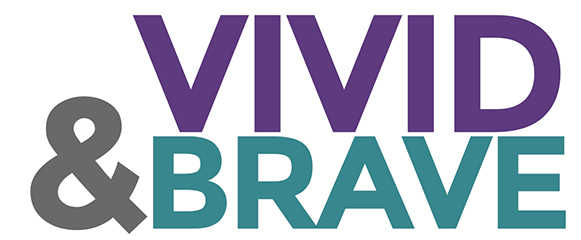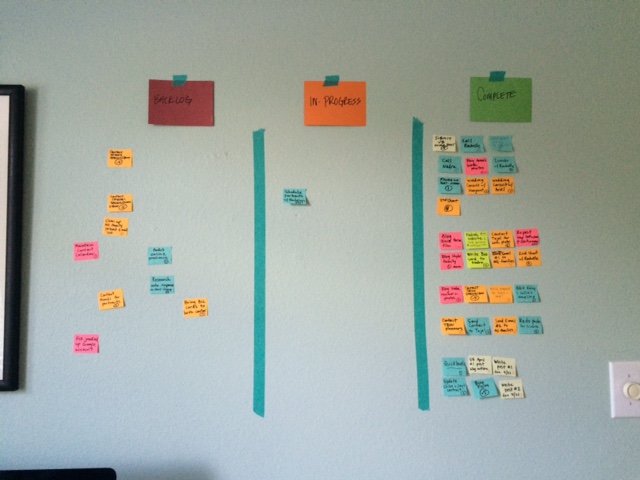There are a million and two ways to organize our life and the tasks that need to be done on a daily basis. Whether you’re using a various assortment of apps on your phone or other electronic device or just good old fashioned pen and paper, there is no end to dreaded to-do list. If you happen to be one of those people that loves making lists I can completely understand why. There is great satisfaction in being able to check that box or forcefully scratch lines through an item with your pen when you have completed something on your list. I totally get it! Its practically therapeutic.
But here’s why I just can’t do them.
A to-do list is, well, just a list. A long column of words that don’t exactly provide any organizational thought to when, where and how things can get done or how long it is going to take to accomplish said task. Even my grocery list makes me crazy unless I separate all my items out by category based on where they are located in the store. Deli items grouped together, produce, dairy…you get the idea. And I know what you’re thinking, “But Anne, what about those tedious little things around the house or errands we need to run?” OK. Yes. This is fine. In my planner for today I had:
- start packing for trip home
- bake two blueberry pies
- buy plane tickets
- check the mail and use an email verification for my email list
Yes, sometimes I need to remind myself to do that last one. Anyway, yes, there are times when a quick sticky note is totally necessary. What I’m talking about, however, are the tasks and projects that need to get done in our businesses. Most of those I just can’t slap onto a to-do list.
So here’s how I organize my work week.
In full disclosure, I don’t work a “normal” forty hour work week like a lot of other people. I don’t even have an office outside of my house. I work from home and my two children, ages four and four months, are home all day with me. So as you can expect, running a business with little kids needing you to cater to their every need presents some challenges. My time is severely limited and needs to be prioritized meticulously so that I get the maximum output from my day. So I needed a tool that was going to keep me organized, but was also going to prioritize which tasks were the most important and how long it was going to take to get them done.
That’s when I was introduced to the Scrum Method.
It was actually my husband that introduced me to this method because he uses it at his office all the time. He works in the field of healthcare software development and the Scrum method of project management has its roots in the IT world. To put it very simply, the scrum method is an incremental form of project management and development where a team of people work together in a flexible manner to reach a common goal. The key here is “flexible.” In the software development world, teams understand that the project could change at any minute and they need to adapt their tasks to what’s most important at that time. But you don’t have to be an IT person or even work with a huge team of people to use this in your daily work life. I have adapted this method to fit my life running a business from home.
To get right to the point and to make this easier to understand, let us take a look at my scrum board.
You can make your board out of anything you want. You can use a white board and markers, a cork board with tags and pins. Mine is simply two lines of painters tape to separate the columns and I use sticky notes to write out my tasks. The board is separated into three columns, Backlog, In Progress, and Complete. Your backlog are all the tasks that you need to get done. In progress are the tasks that you are currently working on that week. Mine is pretty empty in that column as I had just finished up for the week when I took this picture. Then once the tasks are done you move your note to the complete column. Sounds pretty easy, right? And really, it is. The two most important things you need to remember about organizing your projects this way are:
1) Projects need to be meticulously broken down into smaller tasks
2) Everything has a length of time assigned to it. This is the amount of time it is going to take you to get that task accomplished.
Remember, if your time is very limited like mine is then you need to be extremely rigid with assigning a time to each task. And be honest. If a task is going to take you thirty minutes, one hour or three hours, write it down and stick to it. The other reason why you assign a time limit to things is that you are testing what your capacity is from week to week. How much work can you feasibly get done given your working conditions? Is it twenty hours? Forty? Or maybe you find that your capacity is only ten total hours for the entire week. That’s ok! By assigning a time to your tasks you feel extremely productive at the end of the week when you see all those sticky notes on the right hand side of your board, even if the total number of hours isn’t that many. The point is, you accomplished what you needed to and that is very rewarding.
Which brings me back to item number one. In order to have that feeling of accomplishment, we need to be realistic with what a project looks like. For example, I want to set up an email subscription list for people who visit my website. What we do not put on the sticky note in the backlog column is “set up email subscription list.” That is way too generic and doesn’t even begin to address all the little things that need to get done to accomplish this project. The reality is, I don’t just have one list I need to create. I have a portrait list and wedding list. And within those lists there a series of things that need to get set up. I need to research the plugin tool that I am going to use on my site that links to Mail Chimp. I need to install that plugin into Word Press. I need to write the copy of all the series of auto-response emails that will go out to people who sign up for my mail lists. See where I am going with this? If I had just put “set up email list” as one of my tasks I would feel completely defeated when I very well may be hours, even weeks into this project, pulling my hair out wondering why I haven’t moved that damn sticky note yet! Where’s my feeling of accomplishment?! Well, you don’t have one because you didn’t break that big project down into tiny, manageable tasks.
And this is the key. Scrum only works when your tasks are small, manageable and have a definitive timeline.
This is a big picture, very basic view of this organizational tool, which definitely can be very cumbersome if you read more about it. I would encourage you to if you want to learn more. I think this simple description gets the point across as to how it can help you. Hopefully the photo of my board is helpful to further my descriptions. If you are the type of person like me who absolutely needs visual cues to get things done in their business then this method is definitely for you. I even get a little nuts with my color coded sticky notes for what kind of tasks it is. All my sticky note loving readers will totally understand. I encourage you to try it out and let me know what you think. I certainly didn’t invent this method, but I feel like I have adapted it to give me the discipline I need to run my business given my current time constraints.
Happy scrumming!
Anne Schmidt
Latest posts by Anne Schmidt (see all)
- Why I Hate To-Do Lists - July 19, 2015
- The Pay to Play Reality of Social Media | There is No More Free Lunch - July 3, 2015
- Stop Saying You Are Busy - June 11, 2015





